When you first decided to do skiing, you probably paid more attention to the equipment and skis itself, but not like no boots. And after a few classes, you realized that they are inconvenient for you, and your legs are freezing. Now you will have to go and look for a new couple of boots for skiing. But this time before buying, carefully study the features of the choice of sports shoes to choose high -quality and comfortable shoes.
Content
- How to choose boots for skiing - general rules
- How to choose boots for skiing in size
- How to choose boots for skiing in stiffness
- How to choose boots for skiing on insulation and boat
- How to choose ski boots if you have flat feet
- Features of choosing children's, male and women's boots for skiing
- How to store ski shoes correctly
How to choose boots for skiing - general rules
Before studying the parameters of mountain equipment for skiing and the company of manufacturers, consider several important rules. They will allow you to answer your main question: “What to buy boots for skiing?”
- Remember the main principle of choice: good sports shoes will provide you not only the quality of skiing, but also safety. That is why it is not worth saving on buying ski boots. Poor quality and incorrectly selected equipment will not convey the necessary strengthening on skiing, from which it will become difficult to control them.
- Do not get hung up on shoe models. First of all, it is worthwhile to understand that the choice of boots should depend on your level of preparation for this sport and complexity of the track. Only by these features it is worth acquiring equipment.
- But there is one general rule - you should be comfortable in boots and they fit tightly to the leg. If you like to additionally put on warm socks, then you better take them with you to the store and try on a couple with them.
- Then clearly decide for whom the boots. Shoes, which is designed to skate at low speed and is intended for beginners and children in a soft snow cover. Train and remove it is not difficult. Professional models are more rigid with powerful clasps, so they are not suitable for lovers.
- The belt on the outside of the boot also plays an important role for additional fixation of the leg. They are on Velcro (straps) and with a metal fastener (booster). The wider they are, the stronger the lower leg is fixed in shoes and the better sensitivity during sliding.
- It is important to understand that comfort and interaction with skis are more important to you than their appearance and model.
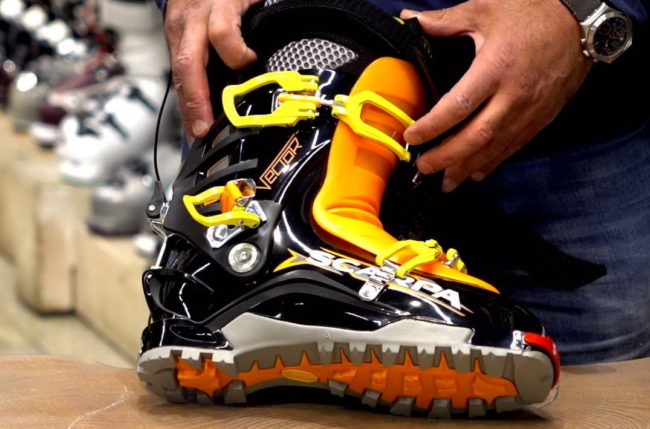
How to choose boots for skiing in size
One of the important criteria for choosing equipment is the selection of size. It is unreasonable to purchase boots for skiing without fitting. Even if you do not know the length of your foot, then in the sports equipment store there are always special planes with markings. Or use the next table to determine the size of the boots for skiing.
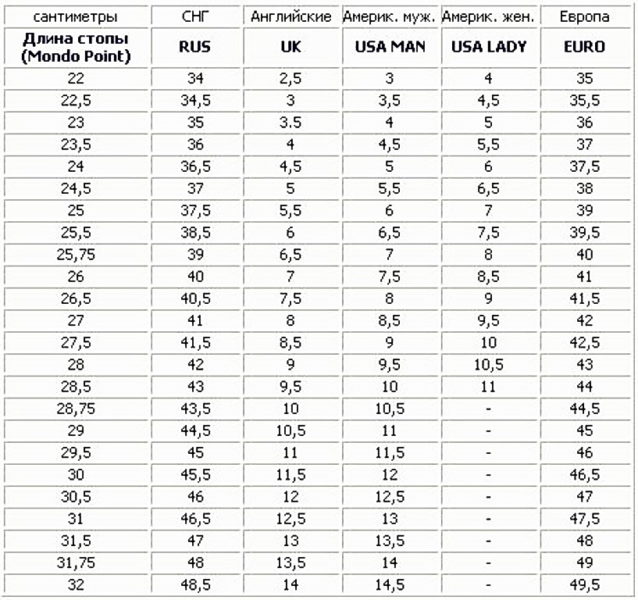
- A good option involves the correspondence of the size of the shoe and your leg. If you have a non -standard size, then you will have to choose shoes with mandatory fitting them.
- Sports shoes are trying on the toe, and on both legs at once. But the toe should be the same that you most often wear during skiing. Also, keep in mind that the inner liner with the toe will become thinner. Taking into account these features, boots for skiing, you need to buy the most dense ones.
- Choose the block thoroughly. Its length is considered the norm if the highest ledge on the fingers slightly concerns the sock on the shoes. But the width also matters when determining the size of the boots for skiing. Choose the model not too wide, but not narrow.
- Some manufacturers produce types of shoes, which regulate completeness in the most problematic areas. This becomes possible with a mechanical lever or soft insert.
- For owners of a wide leg, you will have to more carefully choose sports equipment. You can understand the boots or not, you can only after 15-25 minutes of stay in them. If after this time your legs are numb or you felt a burning sensation, then this is not your model. The pulsation in the leg indicates that you tightly tightened the clasps.
- You should also move your foot in a boot. Bent your leg forward. With the correctly selected size, the leg will remain in place. If it risen, then you need a couple less by size.
- Be sure to check with the seller the possibility of measuring shoes. You can understand whether the size is suitable for you only after a few hours walking around the room in a home environment. With any discomfort, you need to change shoes.
- The size and especially the width of the boot pad will depend on their stiffness. Therefore, the next important parameter for buying ski shoes is its elasticity.
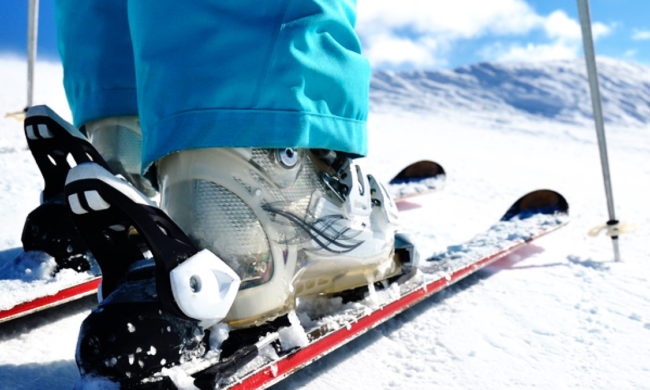
How to choose boots for skiing in stiffness
The elasticity of the frame in sports shoes is necessary to reliably hold a person on skiing during management. But at the same time, ensure the correct pressure of shoes. It is the resistance of the material during the bend that determines the rigidity of the ski boots. If you choose this parameter correctly, then the equipment will be able to withstand the weight of the athlete and does not deform during the control of the foot, as well as ensure stability.
- A clear pattern follows from this - the higher and heavier the person, the elasticity of the boot should be higher. In addition, the style of skiing and your experience also affect the stiffness. For example, for beginners who will be engaged in a park on a light highway, you will need boots with the least rigidity. This also applies to children's shoes. Professional tracks and high skills will require boots with severe elasticity, since the tilt of the leg and the pressure on the ski will be maximum.
- When buying a boot in the store, keep in mind that in warm stiffness is not so felt as at low temperatures during equipment operation at minus temperature.
- For the convenience of buyers, the stiffness of ski shoes is determined by an indicator that has a Newton*meter/degree designation. So, the most mild frame is necessary for children and its indicator - up to 30 nm/city. For beginners, the stiffener selection parameter must be increased to 60 nm/degrees. Fans will be able to choose shoes with a stiffness of 40-80 nm/city, and experienced athletes of 60-90 nm/city. Experts choose boots with a coefficient of 70-120 nm/city, for competitions, elasticity increases to 110-160 nm/city. The highest stiffness of the boots of professionals.
- Before buying, evaluate your capabilities and determine the type of track. In this case, the rule does not work - the higher the rigidity, the better. Too elastic block will squeeze the leg, it is inconvenient to walk up the stairs and it will become difficult to shoot in the cold. In addition, the cost of such equipment is much higher.
- But shoes with the least rigidity should also not be purchased. They will not allow you to keep the leg in the right position. Also, you cannot feel the power of pressure on the skis, as a result of which you will have to control them intuitively.
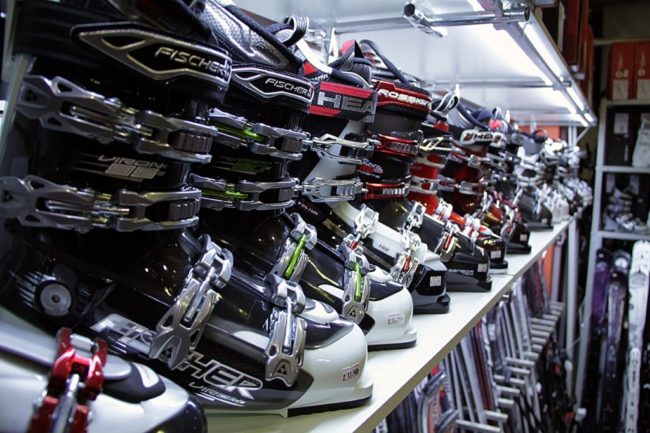
How to choose boots for skiing on insulation and boat
- To provide heat to the legs in the cold inside the shoes, there is an additional shell, which is made of different material. The warmer and denser, the higher the price. The most expensive down liners and warming up, which will allow you to repeat the shape of the leg when heated.
- Their main difference is the foam filler of the boot. Its high density will allow you to cover the leg as tightly as possible and warm it. But at the same time there is a different degree of forming an internal liner.
- Also pay attention to the shape of the insert, which will fill the space between the outer boot and your foot. Therefore, the model of the boat should exactly repeat the inside of the boot.
- But such a heater is acceptable only for light tracks or freestyle, where additional fixation of the leg is not required, but depreciation is important. For skiing on a complex highway and for people with professional skills, boots have the lowest thickness, as flexibility and stability are needed.
- Consider the following feature when buying ski equipment: the thicker the insulation, the less sensitivity of the leg in relation to skiing. Therefore, choose what is more important to you depending on the track and experience - heat or fixation of the foot.
- It should be understood that thick -based thick socks are incompatible with inserts. For ski boots, only a thin sock is used, which can be warm. Give preference to thermons. They will provide natural heat transfer and remove excess moisture. This feature will not allow the leg to freeze at low temperature.
- Also buy special socks for skiing. They have an increased length, which is higher than the shoe level. So during skiing you will not wrap your legs in the lower leg.
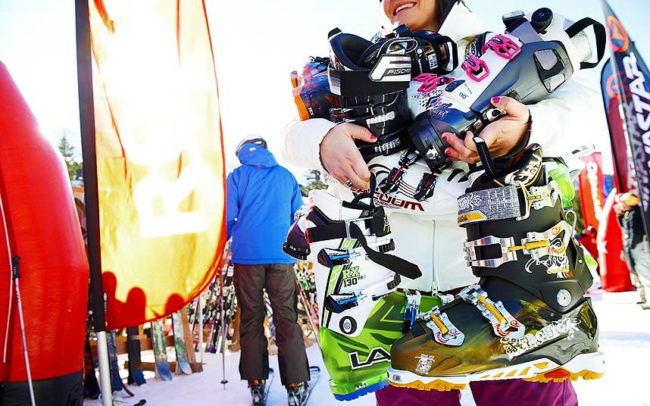
How to choose ski boots if you have flat feet
- Do not refuse to skate on a snowstorm with flat feet. In this case, use a snowboard instead of skiing. Shoes for this sport are as close as possible in design to ski equipment.
- If you still decide to ski, then before buying sports shoes, visit your attending physician. Ask him to write out to you orthopedic insoles. Then take the equipment to the workshop to fit the boot under your leg. Do not try to cut the problem areas on the boot yourself, otherwise you will spoil the shoes.
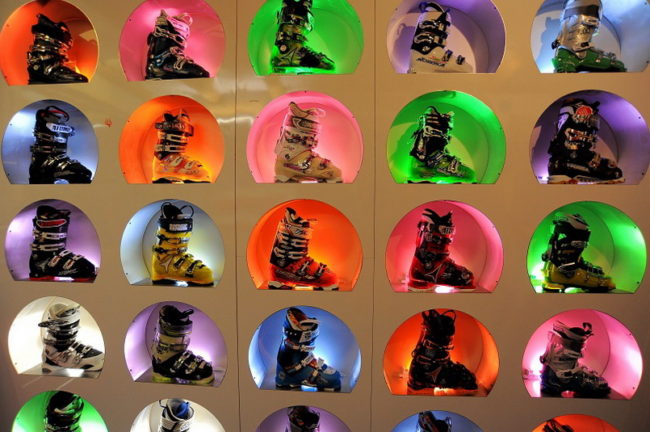
Features of choosing children's, male and women's boots for skiing
In addition to the above parameters for choosing shoes for skiing, do not ignore such an important condition for choosing as the target group. According to it, all models of boots are divided depending on human anatomy. This is equipment for men, women and children. But there are no special differences in the design and rigidity of the frame.
- The women's shoes are slightly shifted by the rise for the leg and the width of the boot is increased. In this regard, such models have settings for regulating volume. The design is made in a calm style, without aggressive elements. The inner boot is more comfortable, warm and with a hidden heel.
- Men have a more elongated and narrow shaft. This feature is taken into account in men's boots for skiing - they are higher than women's models. In addition to the size, men's sports shoes are characterized by an increased heel.
- Children's boots need to be purchased separately and not use the shoes of acquaintances, only because they have become a baby for their child. The children's leg is as unique as adult, but only smaller.
- Due to the fact that shoes for children are small, it has a narrower block. Such boots are the most soft in terms of stiffness, but with enhanced inserts. The design is simple, with a bright color.
- Although children's shoes for skis are the cheapest, you should pay attention to the mounting of the skiing boot. It should be universal, strictly selected under the block and easy to act.
- To select shoe models for children, you should not devote much time. Boops are suitable for checking or not, it can be as follows. Dress the equipment on the child with skiing, fasten the fasteners. If a child can sit in this position several times, then this is your model.

How to store ski shoes correctly
Sports shoes are needed only in the season. The rest of the time, it is cleaned for long -term storage. On how correctly you prepare the equipment, not only his service life, but also your safety will depend.
- After each use of the shoes, it should be wiped dry. But before sending for storage, the outer and inside of the boots should be washed with soapy solution. Then wipe with a damp towel and remove the remaining moisture with paper towels.
- The internal boots and tabs must also be cleaned. The usual washing is not suitable for them. Therefore, use the services of professionals or wipe them yourself with a damp cloth. All parts of the boots should be well dried. But this must be done in a place without sunlight.
- Then carefully inspect the shoes for defects. If necessary, make repairs. Also lubricate all the mechanisms.
- So that during storage, the equipment does not stain, use special covers not only for skiing, but also for boots. Put them in a slightly cool but dry place until the next season.
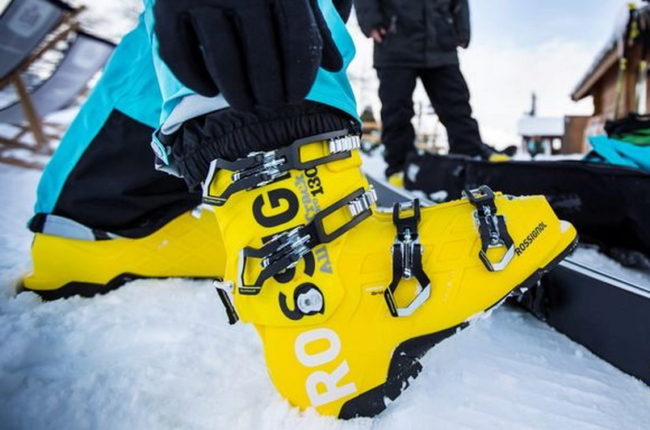
Take the purchase of boots for skiing very carefully. It is on their choice that your safety and stability of the structure will depend, and only then the beauty of the appearance. Successful purchases!
If you still do not understand how to choose boots for skiing, then watch the video:









Comments
a couple of years ago, there was no side of metrogils from the same problem, there were no side effects ...
I’m not a fan of peeling at all, it saves from acne of metrogil, it also smoothes it ...
Great article! ...
I take the second course of the Capsules Climafite 911. The tides went very quickly. It became calmer, irritability went away and I sleep well ...
i also noticed - it is worth nervous, everything immediately affects the face. Therefore, I try to avoid conflicts and unpleasant people. Of the creams, I like Miaflow from wrinkles - smoothes not only small wrinkles ...